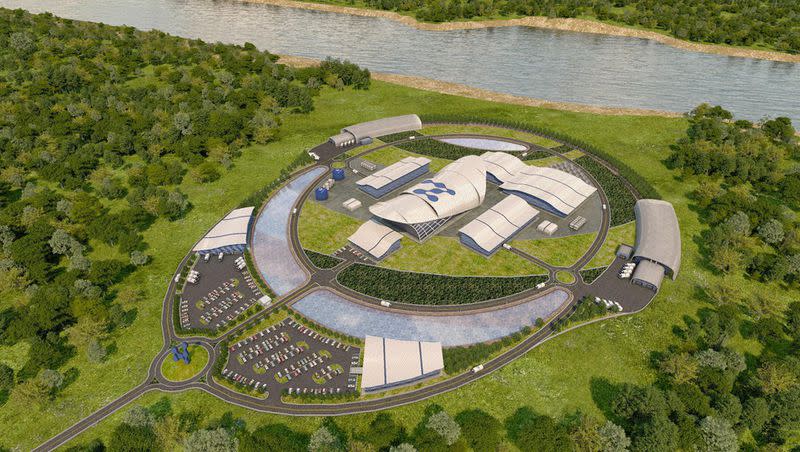Why it takes so long to get advanced nuclear reactors up and running

- Oops!Something went wrong.Please try again later.
A bevy of bills aimed at modernizing, cost cutting and streamlining the permitting process for advanced nuclear reactors recently received endorsement by a congressional subcommittee, in part due to the long and arduous process related to a project with ties to Utah.
C3, an online magazine put out by the Conservative Coalition for Climate Solutions, flagged the bills, including two that would cut costs. One of those bills is sponsored by Rep. John Curtis, R-Utah and another is sponsored by Rep. Larry Bucshon, R-Indiana.
The magazine cited the certification process for NuScale’s VOYGR—which is the only advanced reactor design to receive certification from the U.S. Nuclear Regulatory Commission.
It took seven years to complete and cost NuScale $500 million. The original application alone was 12,000 pages and 2 million pages of regulatory audits. This is in addition to a pre-application process that took nearly 10 years to complete.
NuScale is planning to put in six 77-megawatt modules to generate 462 megawatt hours per year at a site at Idaho National Laboratory, about two hours from Salt Lake City and east of Idaho Falls.
Related
Dubbed the Carbon Free Power Project, it is sponsored by the Utah Associated Municipal Power Systems, a power provider for cities such as Bountiful and other municipal customers and districts. It is slated to be fully operational by 2029.
PacifiCorp, too, is eying TerraPower’s Natrium’s technology via fast molten salt reactors to ultimately replace two coal-fired power plants in Emery County: Huntington and Hunter.
Related
Such a project is on its way in Wyoming to replace a retiring coal-fired power plant there.
The cost cutting measures proposed by both Curtis and Bucshon would make advanced nuclear technology more competitive in terms of cost and innovation.
“America produces some of the cleanest, most affordable, and most efficient energy in the world. We’ve led the world in energy innovation and emissions reductions, while upholding high labor and environmental standards,” the committee chairs said in a press release. “This committee is leading on solutions to ensure the U.S. — not China — continues to be a global energy leader for decades by unleashing American energy and improving our energy security.”
Related
That energy security, emphasized one subcommittee member, must include nuclear.
“As we all know, nuclear energy makes up 20% of the energy we generate in the United States,” said Rep. Diana DeGette, D-Colorado and ranking member of the subcommittee.
“It has the potential to supply a significant portion of our power as long as we continue to prioritize health and public safety. We have bipartisan support for this which is important in this climate. I am proud of the work this committee has done to come together to support the nuclear power sector. … Reliable electricity is one of the most important aspects of American lives.”
Curtis’ Advanced Nuclear Prize Act would authorize the U.S. Energy Secretary to issue “targeted awards” to cover certain fees assessed by the Nuclear Regulatory Commission involving first generation nuclear technology.
“The Prize act will incentivize innovation and quality applications, ultimately making it more affordable for first of its kind technology to get through the licensing process,” Curtis said during the late October hearing.
Bucshon’s bill, the Advanced Reactor Fee Act, aims to reduce costs as well.
“What this means in practice is that the advanced reactor applicants could be paying less than half the current $300 hourly rate for licensing, dramatically reducing their cost by focusing just on paying for the actual license review work,” he said. “This would reduce the financial barriers for new innovators that have yet to prove their designs and attract capital. It reduces the regulatory costs for future technologies, setting the stage for industry innovation, and strengthening America’s energy future.”

